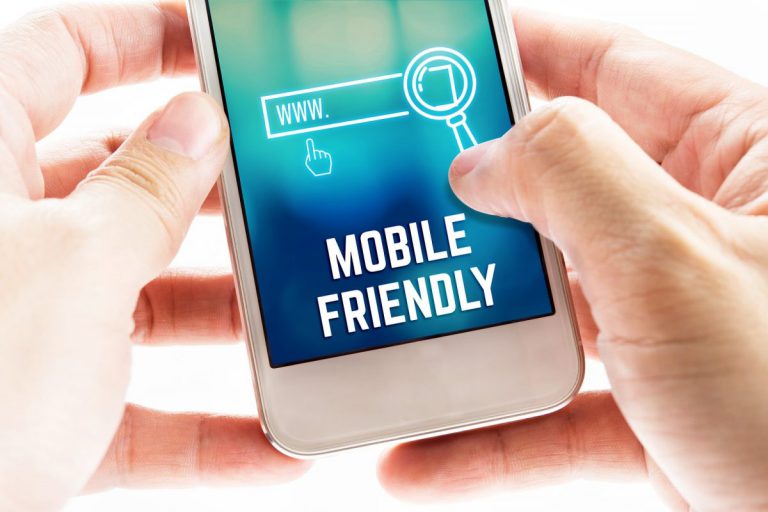
How many of you are reading this blog on your phone or tablet? Chances are, it’s a significant number of you. As of late 2017, 80 percent of internet users own a smartphone, and consumers on average spend 69 percent of their media time solely on their smartphones. We’ve long since passed the point of mobile devices being just a trend, or mobile browsing being something that people only do when they’re out and about and away from their desks. The fact is, a significant portion of your audience is finding you on a mobile device, and if your site isn’t ready for mobile visitors, you could be paying the price.
Don’t believe us? Take a look at these stats from a recent Google survey of 1,088 U.S. smartphone users:
- 67 percent of consumers are more likely to convert on a mobile-optimized site.
- 57 percent of consumers reported that they are less likely to engage with companies that don’t have mobile-optimized sites.
- 61 percent of consumers will move to another site if they can’t quickly find what they’re looking for, with 29 percent saying that they would immediately switch to a different site.
But consumers aren’t the only thing that you need to worry about. This year, Google unveiled its mobile-first indexing. It’s exactly what it sounds like: the mobile-first index will crawl your mobile site before your desktop site, and create rankings for your mobile site and then your desktop site. If you don’t have a mobile site or haven’t taken the time to optimize your site for mobile browsing, then your ranking will suffer.
This is by no means a new topic. Around this time last year, we discussed how you can design your insurance website to be mobile-friendly. But things change quickly online, and there’s always something you can do to ensure that your landing page is perfectly optimize for mobile users.
Google recently unveiled its “8 Principles of Mobile Site Design.” Let’s take a look at what those are:
- Make site search visible and ensure results are relevant.
- Implement filters to improve mobile search usability.
- Design efficient forms with streamlined entry.
- Minimize form errors with labeling and real-time validation.
- Let users purchase as a guest.
- Make it easy to finish converting on another device.
- Keep calls-to-action front and center.
- Use click-to-call buttons for complex tasks.
These principles are a combination of making sure that your sites are still visually appealing and navigable when scaled down to mobile size and ensuring that they can still run efficiently on a mobile device. The key is to make sure that using your website is as easy as possible for your customers and potential clients, no matter how they’ve landed on your site.
First, let’s start with the visual side. Here are a couple of examples of our clients’ desktop sites contrasted with their mobile sites. Take a look at the design for each platform and how they differ.
Caitlin Morgan Captive Services:
Look at the mobile sites compared to the desktop sites. See how the banners, images and headlines are scaled down to comfortably fit on a smartphone screen, and links are easily clickable. On Merrimac Marine’s mobile site, you can see that the contact form is visible and easily available for mobile customers to fill out. All of this is done to make it easier to load, and easier for mobile users to find what they need.
But as you can see from the list and the statistics we mentioned earlier in this blog post, it’s not enough to have a site that looks pretty on a smartphone screen. The landing page needs to run just as smoothly on mobile as it does on desktop, or you’re going to alienate a significant portion of your potential clients before they’ve even had a chance to look at your products and services.
It’s no secret that users want their web pages to load quickly, but search engines are no different. One of Google’s key ranking factors is loading speed, and Google will actively promote web pages with fast mobile loading speeds via its AMP (Accelerated Mobile Pages) initiative. Just a three-second delay in pagespeed can heavily penalize your site’s ranking and performance.
As you develop your mobile site, work on the following:
- Optimizing and compressing your images
- Eliminating redirects
- Reducing server response time
- Expediting the loading of crucial visible content (i.e. the content that the user will see as soon as they access your landing page)
- Ensuring that your mobile site runs smoothly on a variety of different mobile devices (so not just iPhones but also Samsung phones, Androids, Windows phones, and tablets).
If this sounds overwhelming to you, don’t worry. There are a number of resources that you can use to test out your website’s mobile performance. As you work on optimizing your website, periodically run it through these sites. Even if you think your site is perfectly optimized, give it a go every now and then. It never hurts to be too prepared.
- Mobile-Friendly Test – Google’s Mobile-Friendly Test assesses how easily a visitor can use your page on a mobile device, and provide a Mobile Usability report of any mobile usability issues with your site.
- Test My Site – This Think With Google resource will provide your loading time and your estimated visitor loss due to your loading time, in addition to a free report.
- PageSpeed Insights – Another Google resource, this analyzes your web page’s content and provides suggestions to increase pagespeed. This can be done for mobile and desktop sites.
The Takeaway
Mobile site design is a crucial aspect of online marketing for insurance agents in 2018. Without a fully-optimized mobile site, your ranking will suffer and your consumers are likely to bounce off of your site in favor of others. If you don’t have a mobile site, now is the time to get one. If you have a mobile site but haven’t updated recently, now is the perfect time to test out how your site functions and work on improving performance.
About Neilson Marketing Services
Since 1988, Neilson Marketing has been implementing innovative marketing solutions and strategies for our clients in all areas of marketing. Contact us today at (800) 736-9741 to put our talent, expertise, and vast resources to work for you. Let’s make things happen, together!



